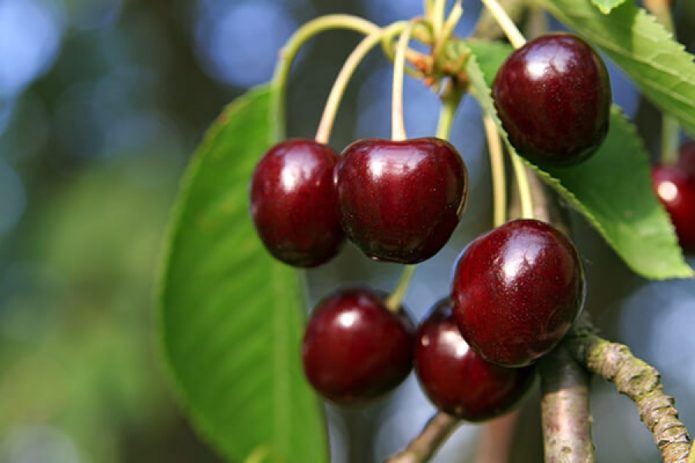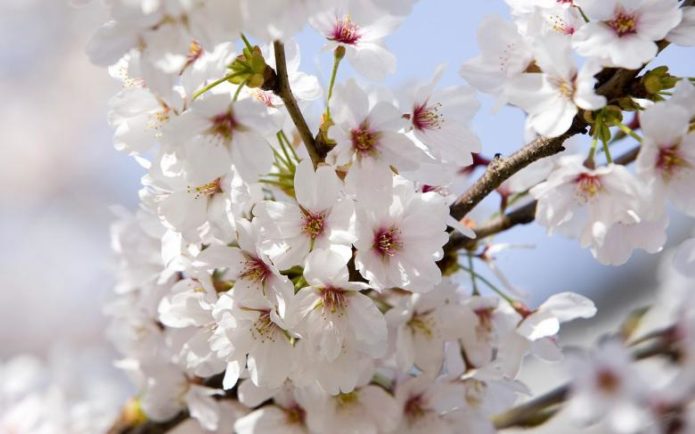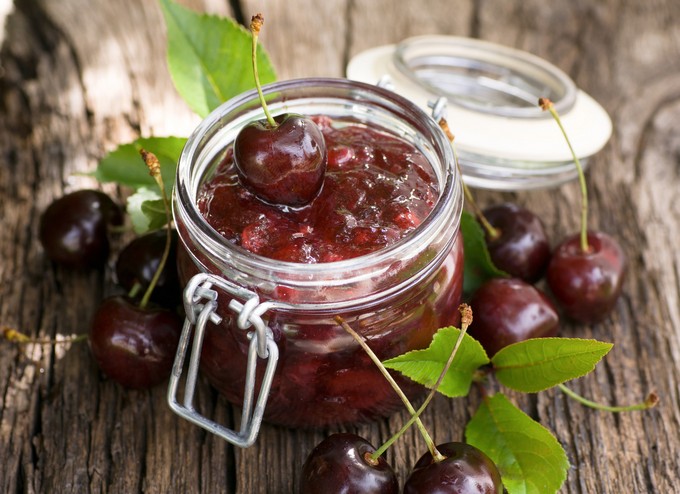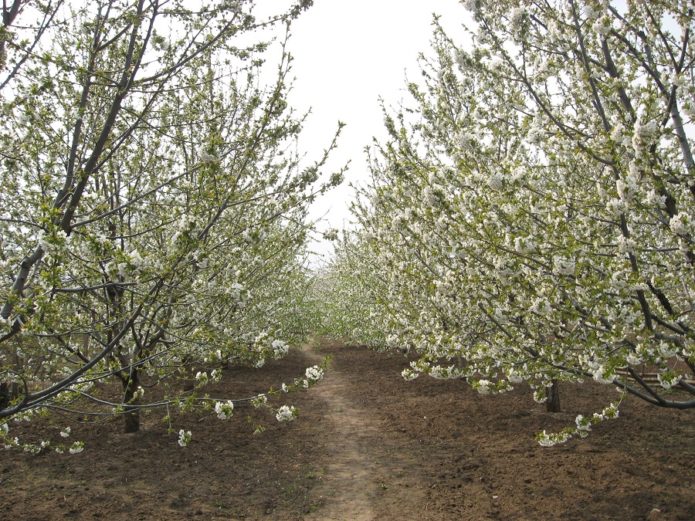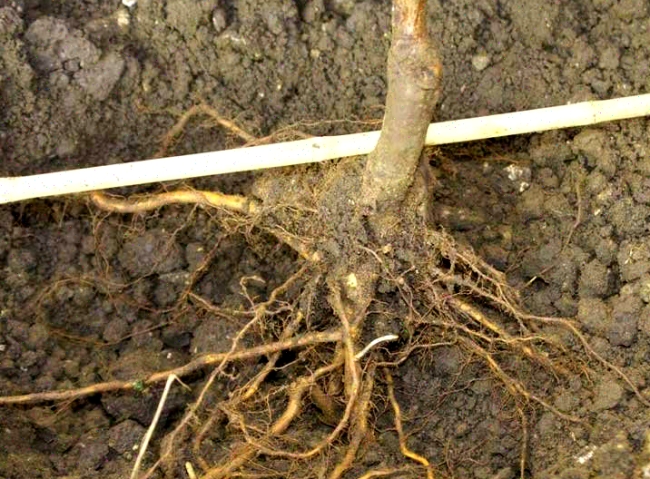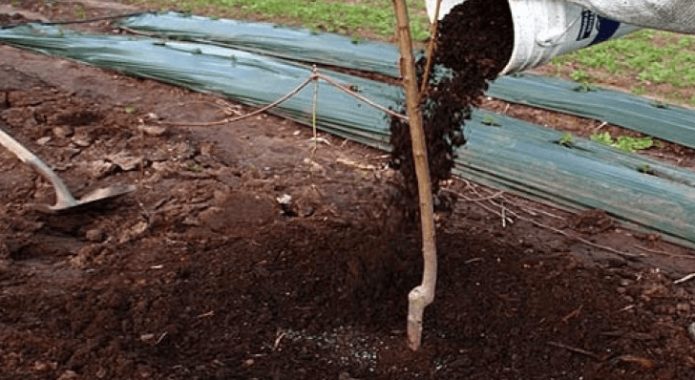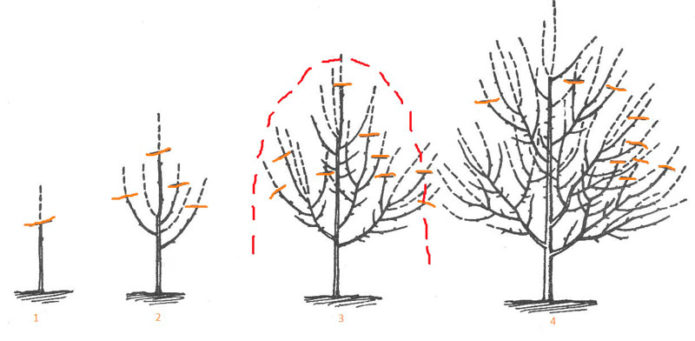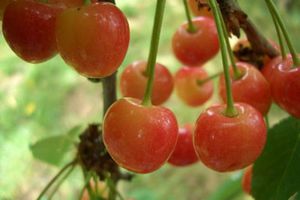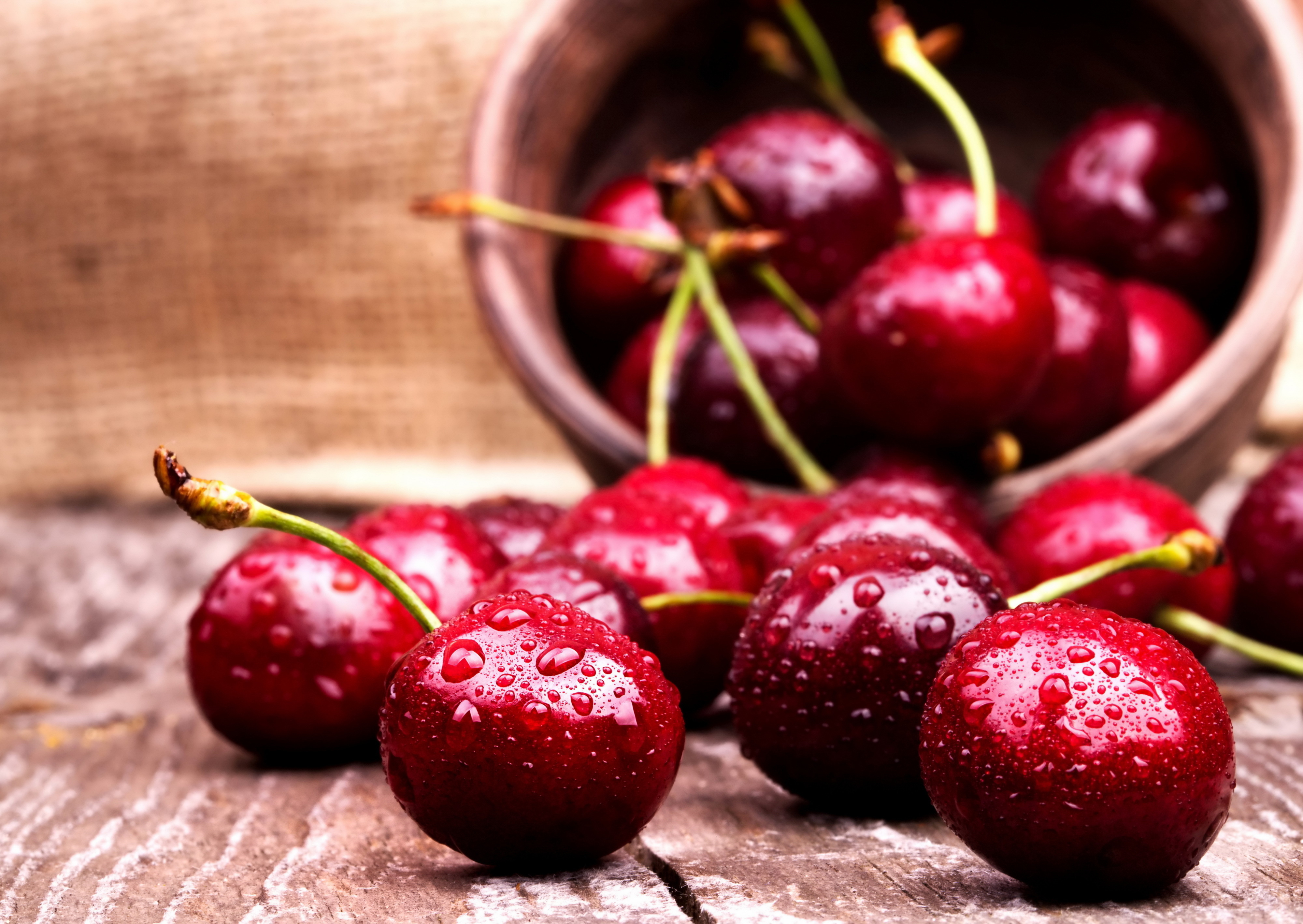The old and almost forgotten sweet cherry variety Napoleon has recently begun to receive more and more good reviews from gardeners not only in the southern regions, but also in the Central region of Russia. The attention of lovers of juicy berries was attracted by such qualities of the variety as good keeping quality and transportability of berries, as well as drought resistance.
Content
The history of the origin of the variety Napoleon
Sweet southerner cherry was known in Europe even before our era. The domestication of many varieties contributed to the emergence of resistant ecotypes in the territory of the former USSR. This is how the Caucasian, Crimean, Moldavian, and Central Ukrainian groups of this berry culture appeared, which are distinguished by inherited features.
The sweet cherry variety Napoleon is considered an old variety bred by breeders in Western Europe. Previously, it was grown only in the southern regions of Russia. The gardener Volganov first brought cherries to the Dagestan city of Khasavyurt, after which the variety spread on a large scale and was zoned in Dagestan in 1931.
The well-known Antipka (Magaleb cherry) became the stock for Napoleon. Therefore, it is resistant to an arid climate, has a sufficiently developed root system that can reach even deep groundwater.
Description of sweet cherry varieties Napoleon (black)
This is one of the late varieties of sweet cherry, which begins to bear fruit in the 4th or 5th year after planting. It is before fruiting that the especially intensive development of the tree is noted.
An adult plant can reach 6 m in height, since it is grafted onto the vigorous form of the magalebka. The crown is spreading, spherical in shape. Abundant flowering occurs in late March-early April (depending on the climate and region). Each inflorescence contains 2-3 flowers, which predominate on the first five buds of young shoots and bouquet branches.
The berries ripen in mid to late June. The variety belongs to the bigarro group, therefore its fruits have a thick skin and sufficient density. A pleasant sweet-sour taste, rich dark red color, heart-shaped, with a juicy ruby-colored pulp, large (weighing up to 7 g) berries of this cherry are literally referred to as garden masterpieces. To all of the above qualities, it is worth adding excellent keeping quality (up to 2 weeks in a cool place) and transportability.
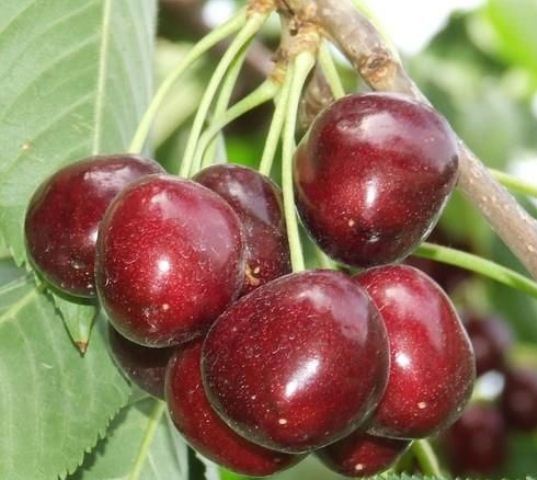
Large berries of the Napoleon cherry are stored for a long time, transportable, have excellent characteristics
The value of sweet cherries Napoleon lies in its versatility. The fruits are good in fresh and dry form, winter harvesting, frost; are widely used in folk medicine, cosmetology, and the culinary industry. It is not for nothing that the tasters gave a high assessment to the taste of the berries - 4.9 points out of 5.
Small disadvantages of the variety are its low resistance to low temperatures and the pest - cherry fly. Trees can freeze on wet soils and lowlands.Therefore, Napoleon can reach the apogee of all his best qualities in the southern regions. Here the yield of the variety can be up to 70 kg per tree. Average yield is about 30 kg.
Although the variety is susceptible to the invasion of the cherry fly, it is resistant to many fungal diseases.
Features of growing and caring for sweet cherries of the Napoleon variety
When starting to plant seedlings, it is necessary to take into account some of the nuances of growing and caring for the variety. For example, the fact that he needs pollinators. This role can be played by Valery Chkalov, Zhabule, Drogana yellow, Cassini early, Early mark. In large plantings of cherries, it is recommended to form paired rows.
Landing
Sweet cherries are often called "sunny berries" because they love sunny, bright places. The Napoleon variety, adapted to dry climates, is no exception. Also, cherries do not like sodden areas, so the planting site should be cleaned of weeds, dug onto a shovel bayonet, and fertilized with organic matter if necessary.
The planting hole should be deep enough to provide room for the bottom fertilizer layer and the long roots of the tree. When planting cherries, it is not necessary to deepen the root collar. It should be a few centimeters above ground level and on the south side. When planting in autumn, the root collar is necessarily spud, and in the spring it is opened after the threat of late frosts has passed.
In the north and in the central region of the country, spring planting should be preferred so that the autumn frosts do not have time to harm the tree root system that has not yet taken root.
Watering and feeding
Watering and feeding will also depend on the region. In the southern regions, more thorough watering will be required, especially during dry periods. Accordingly, more fertilizing will be needed on soils poor in humus.
Watering is especially necessary:
- in May, after the cherries have bloomed to saturate the tree with moisture for the future development of fruits;
- while pouring berries so that they are juicy and have a beautiful appearance;
- during a drought (abundantly saturating the soil to a depth of 40 cm);
- in the fall to saturate the tree with moisture before the winter cold.
On poor sandy and clayey soils, you can limit yourself to fertilizing with organic fertilizers (manure, rotted plant waste), given the high cost of mineral fertilizers.
Pruning
Napoleon's pruning is common, as for other varieties of this berry crop:
- Mandatory shortening of annual shoots by 1/5 of the trunk.
- Pruning of incorrectly positioned shoots going into the crown (formative).
- Sanitary shaping pruning (removal of dry, damaged, frozen branches).
After pruning, do not forget to process the slices with garden pitch for better healing and prevention of diseases and pests.
Pest control
Only in some cases the variety may require insecticide treatment: with a strong infestation by cherry weevil, aphids and caterpillars. Usually it is carried out once, two weeks after flowering. You can use Aktara, Actellik, Engio preparations for spraying (you must act according to the instructions for them).
At the end of autumn, you need to dig up the soil in the near-trunk circle, burn all the weeds and fallen leaves.
Video: how to properly care for cherries
Variety reviews
Cherry seedlings of this variety grow well in the Moscow region. But for landing, you need to choose the right place. It is best to plant cherries on a hill, in a sunny place. Make sure the land is peat-free. You need to feed the seedlings with organic matter and mineral fertilizers. Kemir is well suited for fruit crops. Cherries are best planted in spring.
I found my cherry variety.I sincerely recommend paying attention to it. The tree is not very tall in adulthood. Very narrow pyramidal crown that takes up little space. It is resistant to fungal diseases and is very, very rarely damaged by the main pest of this culture - the cherry fly. If you still do not have cherries on the site, then I sincerely recommend paying attention to the Napoleon variety, especially in the southern regions.
The Napoleon variety deserves the attention of gardeners due to its excellent qualities. It should also not be forgotten that it was one of the first imported into European countries and passed a strict selection for quality standards.
